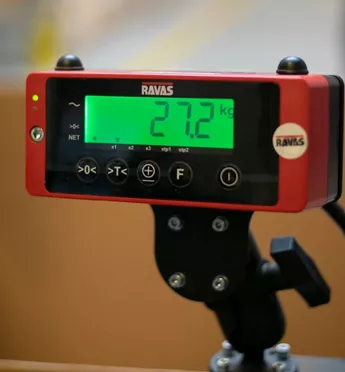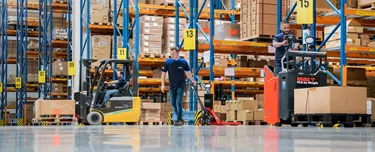Re-weighing and dimensioning
Recently, Forklift Action published an article about increasing revenue in LTL operations through re-weighing and dimensioning. In order to recover the missed revenues, LTL carriers install re-weighing procedures, using mobile weighing systems on their forklift trucks to do this as efficiently as possible. With a RAVAS mobile weighing system, inbound pallet shipments are weighed in motion, and the weight, dimensions and ID communicated to a TMS or WMS as a single data set. All this without taking the goods out of the process, without impact on productivity. Any deviations from declared weights are invoiced to the customer.
)

The article in a nutshell
How it works
Suitable cross docking solution
RAVAS is frequently asked for a suitable cross docking solution for these re-weighing procedures, with the least impact on loading and offloading procedures. This requires a new, efficient work cycle.
In-motion weighing and dimensioning
Pallet re-weighing operations at LTL hubs are frequently combined with dimensioning, in order to invoice volume/weight. RAVAS works with several partners that supply dimensioning equipment.
Investments
What is needed for the installation of a typical re-weighing procedure? Forklift trucks and electric pallet trucks are equipped with a RAVAS scale, integrated in the forks. The weight display on the truck is fitted with a WiFi module to communicate with the TMS (Transport Management System) over the user’s wireless network.
ROI studies
One of the most interesting aspects of investing in re-weighing procedures in LTL operations is its return on investment. Since re-weighing immediately results in added revenues, payback time on the investment in the RAVAS forklift scales is typically in the range of two months to one year, depending on the seize of the operation.
Read full articleIncrease revenues by re-weighing inbound pallet shipments
Read full article